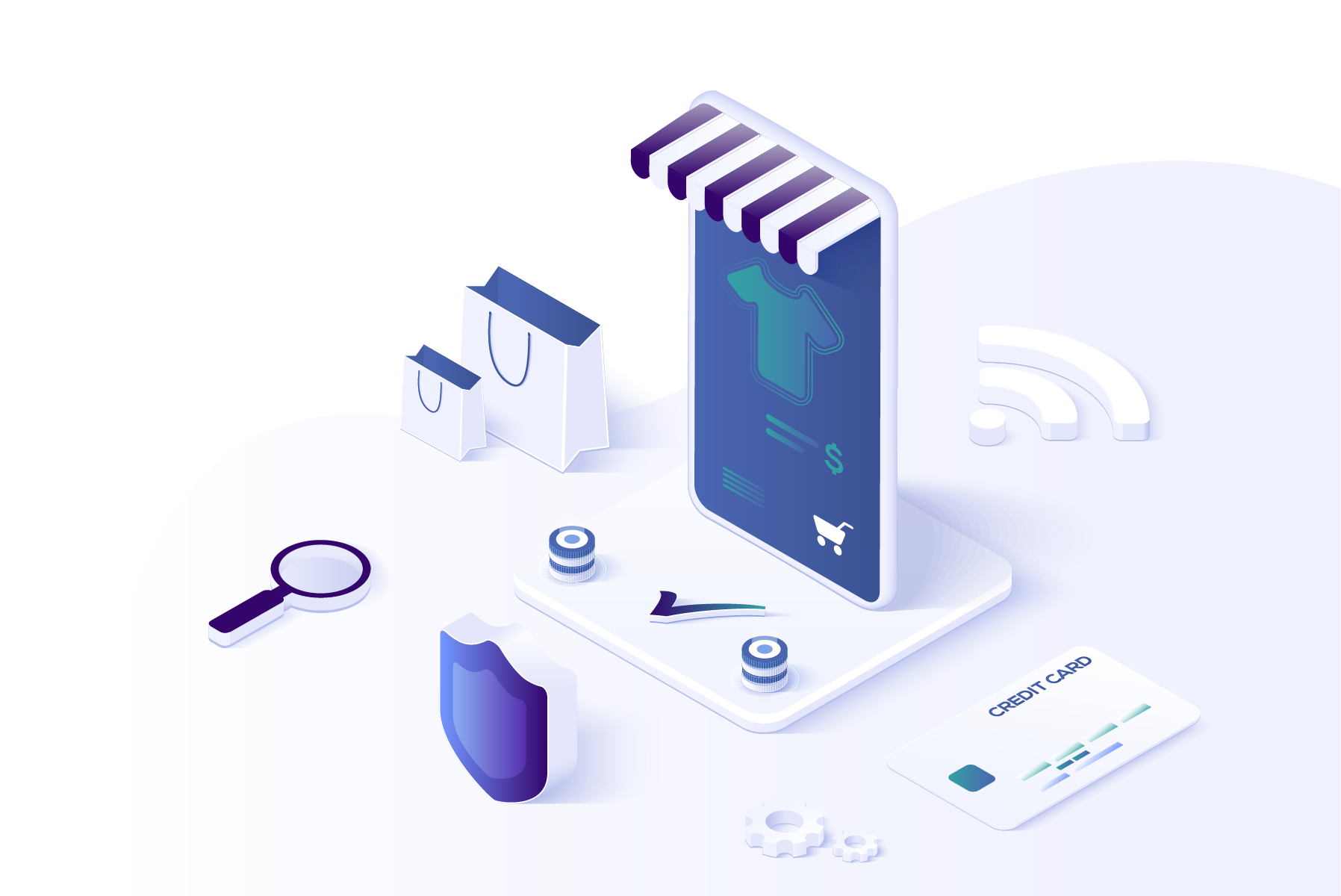5 things every E-commerce website should have

E-commerce has been on the rise and there are no signs of it slowing down. The convenience of being able to shop with a couple of clicks and taps is what makes this market so powerful and nearly impossible to ignore. No product or service is off limits when it comes to e-commerce: whether its clothes, electronics, or merchandise for a Non-governmental organization. According to Statista this industry is expected to grow by 50% in the next few years, with China leading in the charts, followed by the UK, South Korea and Denmark.
Quick dive into the history of Ecommerce
E-commerce is far from being ‘just a recent development’. The explosion that we witness today has been in the works for over half a century, with building blocks that can be traced back to the early 70’s.
Long before the internet went public in 1991, e-commerce was already setting the blueprint for the further development of a life-changing phenomenon. It started off in The United States circa. 1969 with CompuServe, being the first major e-commerce company of the country that facilitated teleshopping in the early 70’s. Three years later the English inventor and entrepreneur Michael Aldrich laid the groundwork for e-commerce in his own country by modifying a TV and using a telephone line to connect it to a multi-user transaction processing computer. This allowed users to order different products and services.
Fast forward to 1995, where online businesses had registered over 120.000 domain names and 3 years later over 2 million. As the internet was becoming more accessible, more entrepreneurs began looking for ways to make money through e-commerce.
By now we’re used to hearing about the performing giants such as Amazon, Ali Baba and Shein, but that doesn’t exclude the smaller players from participating in this winning game. Whether the company is big or small, all you need to do is master the essentials of an e-commerce business.
If you wish to start in 2022, these are the features that will set you up for a thriving e-commerce business:
1. A smooth website with ecommerce integration
It’s where it all starts, from product information to the actual purchase. Your website should be easy to understand and navigate, with information and call to actions that are impossible to miss. Important to note that 67% of online purchases are made through a mobile screen. So mobile responsiveness is key. Luckily, integrating platforms like Shopify or WooCommerce make it easier to get it right the first time, without the heavy coding.
2. A secured network
Security builds trust and trust is what happens to be the main currency of e-commerce. Coming from a period where a lot where people were isolated and down financially, fraudulent attempts online rose. On an average, E-commerce retailers deal with 206,000 web attacks per month (source Signal Sciences, 2019). This is where SSL (secure sockets layer) comes into play, offering a standard security technology to protect encrypted information between a server and the recipient of its stored information. SSL security typically establishes a secure link between a Web server, or an ecommerce website in this case, and the browser. It’s quite easy to tell if a website you’re on has SSL by looking at the URL: if it begins with “https” instead of “http,” then the site is secured using an SSL certificate. These certificates are usually easy to get and in some cases are offered when buying a domain.
3. Inventory management
It’s nearly impossible to run a webshop without having an exact overview of the products that you are selling. When a client checks out, the only thing they want to do is happily wait for delivery. Receiving an email afterwards to hear that the product can not be delivered (for whatever reason) can lead to the decision of never purchasing on your platform again. As mentioned earlier, everything needs to be quick and convenient for the consumer because nowadays they are accustomed to a particular high-level service or in other words, spoiled. Track your inventory live and meticulously through platforms like ShipBob, Katana or Zoho, all of them easy to integrate with your already existing website or webshop.
4. Brand identity & quality content
Now that you have your back end set up: a functioning and secured ecommerce platform with a smart inventory management system, what’s next? Putting your product online. And there’s no good product/service online that sells better than a product/service that is well presented. Next to establishing a strong brand identity that your customers can emotionally connect with, it’s important to use the right content to display what it is that you’re selling.
Arguably, this shouldn’t be the fourth essential point you work on but perhaps the first. However in many cases we have seen that the ecommerce industry doesn’t always play by the rules of the book. So the order of things shouldn’t matter as much. A great example of this, is the rise of sneaker resell platforms on social media. The demand for exclusive sneakers is extremely high so the platform or even the presentation doesn’t matter to these customers, as long as it’s available in their desired sizes, you can take all their money. In this case though, the brands carrying the sneakers have been playing the marketing game for decades, which results in a big fear of missing out for sneaker enthusiasts.
To resume brand identity & quality content: make your product or service stand out with the right imagery and copy.
5. Social media marketing
Reach your online customers where they are, which is nowadays social media. The big budgets that were used for outdoor advertising, TV and radio, are shifting to the different channels that make it possible for your products to be seen with or without the necessary paid push. Use these tools not only to promote but also to interact with your audience and in most of the cases to offer a customer service that is quick and responsive. A social media platform such as TikTok can make your product go viral in a few minutes, resulting in empty shelves, and a higher demand than before. Instagram remains the go-to platform for the presentation of your products and email marketing is great for retargeting indecisive customers or offering special long time customers exclusive perks.
Next to these 5, the list keeps growing and for every business it goes even deeper. Make sure to stay informed about the tools in your sector and implement them accordingly to stay on top of things.






